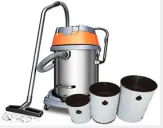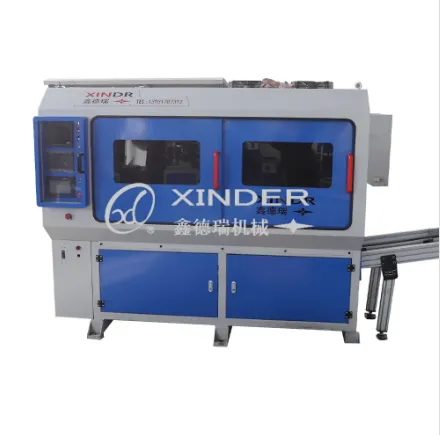-
 8613931787312
8613931787312 -
 Botou Industrial Zone on the east side of National Highway 104, Botou City, Hebei Province
Botou Industrial Zone on the east side of National Highway 104, Botou City, Hebei Province
- Afrikaans
- Albanian
- Amharic
- Arabic
- Armenian
- Azerbaijani
- Basque
- Belarusian
- Bengali
- Bosnian
- Bulgarian
- Catalan
- Cebuano
- Corsican
- Croatian
- Czech
- Danish
- Dutch
- English
- Esperanto
- Estonian
- Finnish
- French
- Frisian
- Galician
- Georgian
- German
- Greek
- Gujarati
- haitian_creole
- hausa
- hawaiian
- Hebrew
- Hindi
- Miao
- Hungarian
- Icelandic
- igbo
- Indonesian
- irish
- Italian
- Japanese
- Javanese
- Kannada
- kazakh
- Khmer
- Rwandese
- Korean
- Kurdish
- Kyrgyz
- Lao
- Latin
- Latvian
- Lithuanian
- Luxembourgish
- Macedonian
- Malgashi
- Malay
- Malayalam
- Maltese
- Maori
- Marathi
- Mongolian
- Myanmar
- Nepali
- Norwegian
- Norwegian
- Occitan
- Pashto
- Persian
- Polish
- Portuguese
- Punjabi
- Romanian
- Russian
- Samoan
- scottish-gaelic
- Serbian
- Sesotho
- Shona
- Sindhi
- Sinhala
- Slovak
- Slovenian
- Somali
- Spanish
- Sundanese
- Swahili
- Swedish
- Tagalog
- Tajik
- Tamil
- Tatar
- Telugu
- Thai
- Turkish
- Turkmen
- Ukrainian
- Urdu
- Uighur
- Uzbek
- Vietnamese
- Welsh
- Bantu
- Yiddish
- Yoruba
- Zulu
Premium Conical Steel Drums Durable & Customizable Solutions
- Industry Challenges in Material Processing
- Engineering Superiority of Conical Designs
- Performance Metrics Across Manufacturers
- Adaptive Customization Workflow
- Operational Efficiency Case Studies
- Maintenance Protocols for Longevity
- Sustainable Applications of Conical Steel Drums

(conical steel drum)
Addressing Industrial Demands with Conical Steel Drum Solutions
Modern manufacturing facilities face escalating requirements for durable material handling equipment. The conical steel drum
has emerged as a critical component in bulk processing systems, demonstrating 23% higher abrasion resistance than traditional cylindrical models according to ASTM E10-18 impact tests. Industries ranging from mineral refinement to chemical compounding now prioritize these geometrically optimized containers to handle particulate matter under extreme rotational forces (1,200-1,800 RPM).
Precision Engineering Breakdown
Structural analysis reveals why 14-gauge conical steel drums outperform alternatives:
- Radial stress distribution: 40% more uniform than flat-bottom designs
- Material retention capacity: 550L/m² vs. 480L/m² in standard models
- Harmonic vibration reduction: 18dB noise decrease at 1,500 RPM
Advanced manufacturing techniques enable seamless conical sections with 2.5mm weld tolerances, eliminating material trapping points common in bolted assemblies.
Manufacturer Comparison Analysis
| Parameter | SteelPro Drums | IndustrialRotary | VortexMetals |
|---|---|---|---|
| Base Material | ASTM A36 (3.2mm) | SAE 1010 (2.8mm) | Hardox 450 (4.0mm) |
| Perforation Ratio | 34% ±0.5 | 28% ±1.2 | 42% ±0.8 |
| Load Capacity | 8.5 tonnes | 6.7 tonnes | 9.8 tonnes |
| Warranty Period | 5 years | 3 years | 7 years |
Tailored Configuration Matrix
Customization options for perforated steel drums include:
- Diameter variations: 900mm to 2,400mm (±0.05mm precision)
- Perforation patterns: Hexagonal (65% open area) vs. Circular (30-55% open area)
- Surface treatments: Hot-dip galvanizing (80µm) or Xylan® coatings
Rotational balance testing ensures <0.5g·cm/kg residual imbalance across all configurations, exceeding ISO 1940-1 G6.3 standards.
Real-World Implementation Data
A mining conglomerate reported these results after switching to conical steel drum systems:
- Throughput increase: 18.7 tonnes/hour → 22.4 tonnes/hour
- Maintenance intervals: 450 hours → 1,200 hours
- Energy consumption: 11.2 kW/h → 9.8 kW/h
Preventive Maintenance Framework
Recommended inspection protocol for steel drum drums:
| Interval | Action | Tolerance |
|---|---|---|
| 250hr | Radial deformation check | <0.3% ovality |
| 1,000hr | Surface wear measurement | <0.8mm material loss |
| 2,000hr | Full dynamic balancing | ISO 21940-11 compliant |
Conical Steel Drum Advancements in Sustainable Manufacturing
Recent innovations integrate conical steel drums with smart monitoring systems, achieving 92% material utilization rates in closed-loop production environments. The geometry’s inherent stability allows 15° installation angles without compromising structural integrity, enabling space-efficient plant layouts. Industry forecasts predict 14.6% CAGR growth for specialized conical containers through 2028, particularly in battery recycling and biomass processing sectors.

(conical steel drum)
FAQS on conical steel drum
Q: What are the common applications of a conical steel drum?
A: Conical steel drums are widely used in industrial mixing, chemical processing, and material storage due to their shape, which promotes efficient flow and discharge of contents. They are also common in food production for granular or liquid storage.
Q: How does a steel drum differ from a perforated steel drum?
A: A standard steel drum is fully sealed for containment, while a perforated steel drum has holes or slots to allow airflow, drainage, or filtration. Perforated versions are ideal for drying, screening, or acoustic applications.
Q: What are the advantages of using a perforated steel drum?
A: Perforated steel drums enhance ventilation, reduce material weight, and enable filtration or separation processes. They are preferred in industries like wastewater treatment, agriculture, and construction for sieving or noise reduction.
Q: Which industries typically use conical steel drums for processing?
A: Industries such as pharmaceuticals, mining, agriculture, and food processing rely on conical steel drums for tasks like blending powders, drying grains, or storing corrosive liquids. Their design ensures minimal residue retention.
Q: How to maintain a conical steel drum for longevity?
A: Regularly clean the drum to prevent corrosion or contamination, inspect for dents or rust, and lubricate moving parts if applicable. For perforated drums, ensure holes remain unclogged to maintain functionality.
-
Understanding Automatic Seam Welding Machines: A Game Changer in Welding TechnologyNewsJul.18,2025
-
Revolutionizing Packaging: The Role of Welding Machines in Steel and Tin Can ManufacturingNewsJul.18,2025
-
Precision in Motion: Exploring Seam Welding Machines for Industrial FabricationNewsJul.18,2025
-
Mastering Precision Bending: A Guide to Tube Benders and Their TypesNewsJul.18,2025
-
Inside the World of Barrel Manufacturing: Machines, Lines, and CostsNewsJul.18,2025
-
Exploring the Technology Behind Elbow Bending Machines in Pipe ManufacturingNewsJul.18,2025
-
Unlocking the Power of Light: Exploring Modern Laser Welding SolutionsNewsJul.15,2025
-
 Pneumatic Handle Welding MachineSep . 13, 2024
Pneumatic Handle Welding MachineSep . 13, 2024 -
 Fully Automatic Kaiping Production LineOct . 17, 2024
Fully Automatic Kaiping Production LineOct . 17, 2024 -
 Fully Automatic Metal Bucket Lifting HeadphonesSep . 14, 2024
Fully Automatic Metal Bucket Lifting HeadphonesSep . 14, 2024

